Fondazione Prada exhibition is an ode to a vanishing Venice
At Fondazione Prada’s 18th-century Venice palazzo, group exhibition ‘Everybody Talks About the Weather’ straddles beauty and fear and probes Venice’s precarious environmental future
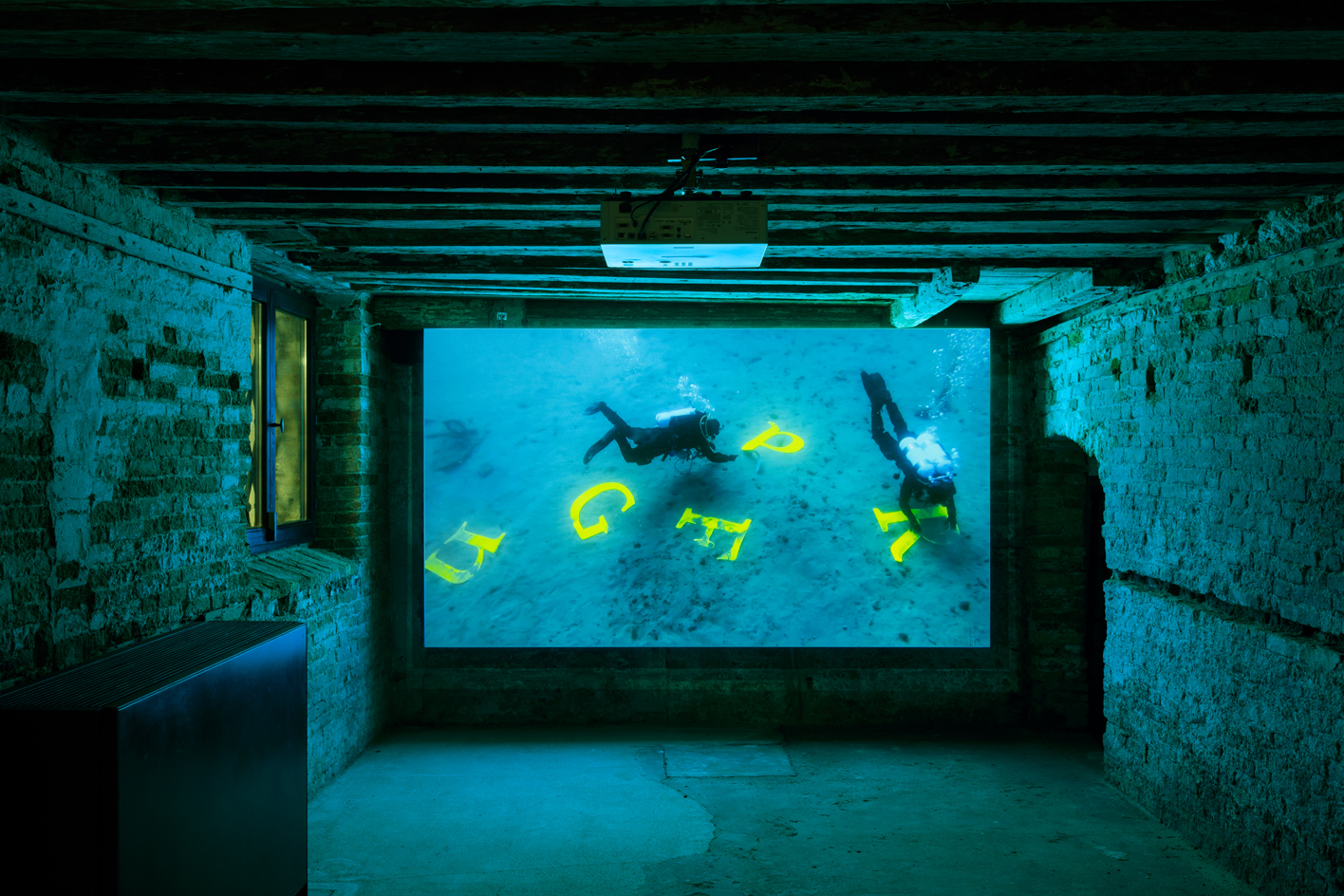
The Grand Canal laps at the steps of Fondazione Prada’s 18th-century palazzo, leaving strata tidemarks charting the rising lagoon. This waterside entrance was once used not only to deliver dignitaries and guests who then climbed the grand staircase to the richly decorated Piano Nobile, but also materials and goods which were then stored in the somewhat less-grand ground floor spaces. ‘Everybody Talks About the Weather’, the venue’s new exhibition curated by Dieter Roelstraete and coinciding with the Venice Architecture Biennale 2023, spreads across both floors, filling it with aesthetically beautiful if potentially cataclysmic images.
A ground-floor, low-ceilinged store is transformed through the blue hue of a sub-aqua video from Raqs Media Collective. Deep Breath (1999/2002) follows three divers in the Aegean Sea on a situationist quest to find distributed letters to spell out ‘the forgetting of air’ – a fragment of ancient Greek aphorism which references a study of Martin Heidegger, but perhaps now also speaks to our taking-for-granted of elemental forces and a collective lack of care for them. The work was filmed the summer before Covid, though the divers’ heavy breathing through back-strapped air tanks acts as a haunting premonition of the sounds of breathlessness and intubation which followed.
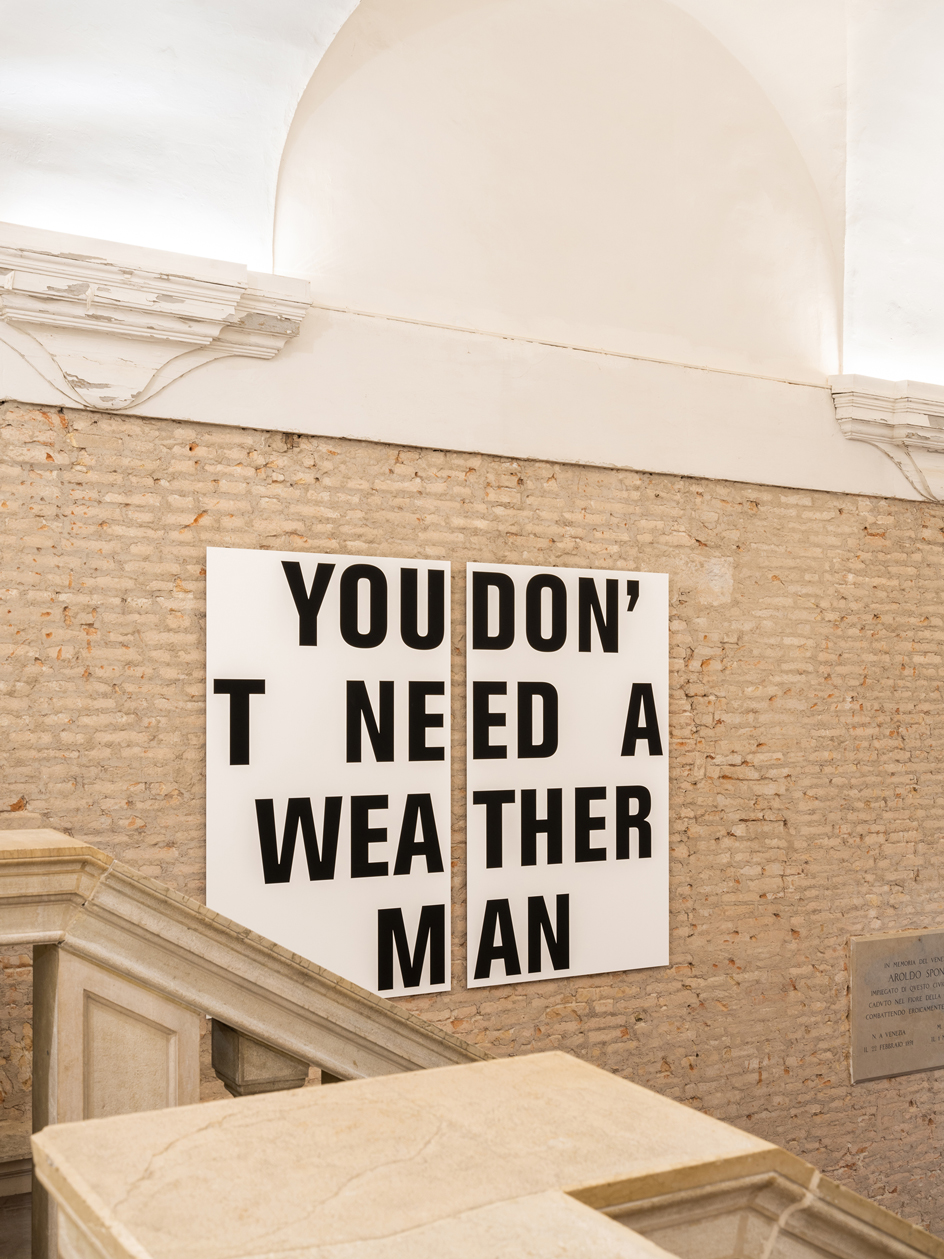
Iñigo Manglano-Ovalle, You Don't Need a Weatherman (Version 3), 2017. Exhibition view of 'Everybody Talks About the Weather' at Fondazione Prada, Venice
The ground floor stores of palazzos such as Fondazione Prada’s Ca’ Corner della Regina are designed to survive Venice’s annual flooding, allowing high waters to pass under, while architecture and artworks of greater value are safe on higher floors. However, half of Venice’s intense high-water events since 1872 have occurred within the past three decades, so Raqs’ footage of divers floating through the palazzo could be read as another foretelling.
‘The scientific community is largely agreed that in 75 years Venice will exist no more, it will have been drowned … so this building will be lost,’ Roelstraete tells me. This risk of flooding can be read in his curation: the floodable ground floor predominantly presents video and quickly-demountable wall works – including Plastic Horizons (2014), a series in which Dan Peterman layers strips of recycled plastic as if documenting anthropogenic chronology – alongside ten high-resolution but relatively low-value printed reproductions of famous historical paintings.
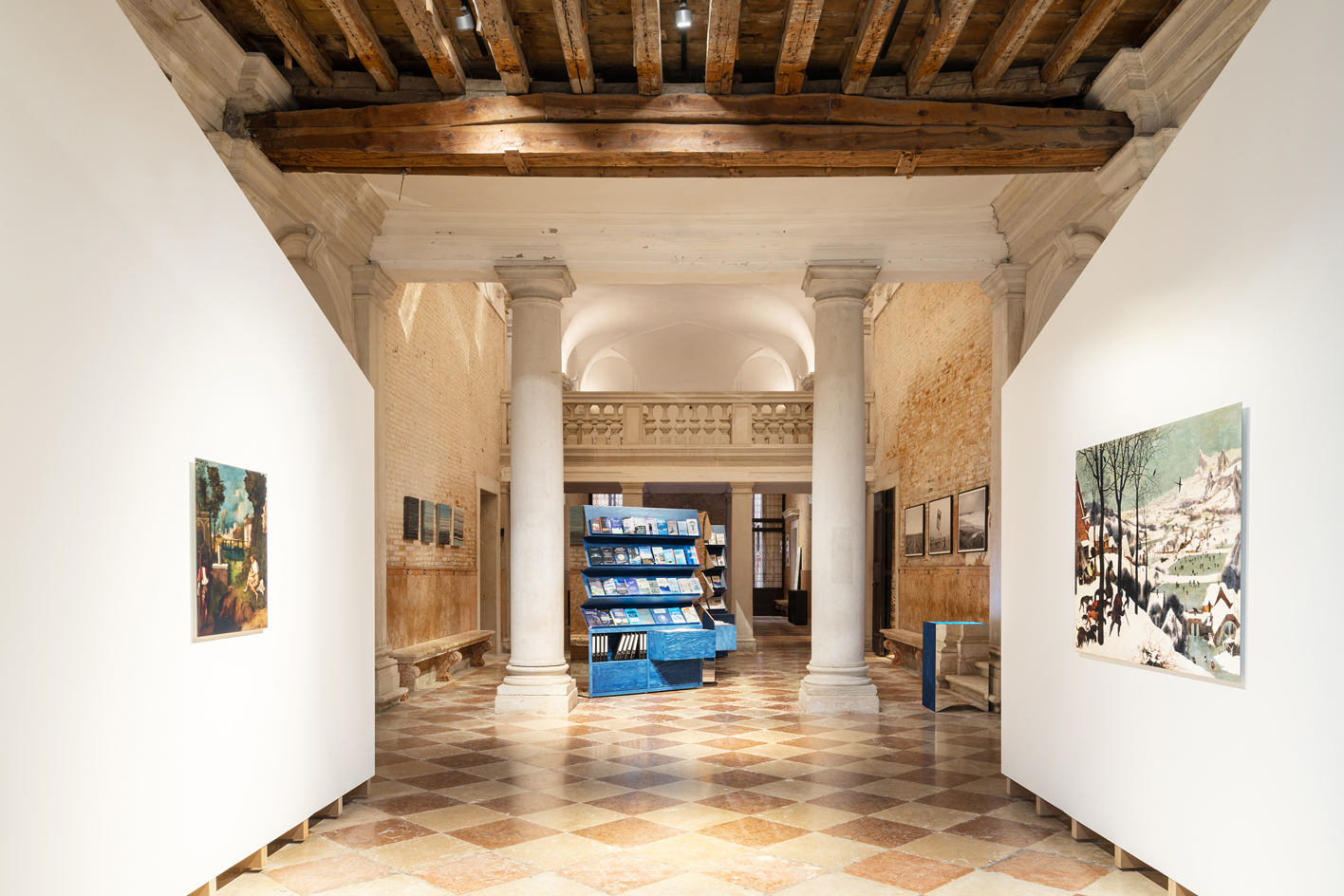
Exhibition view of 'Everybody Talks About the Weather' at Fondazione Prada, Venice, featuring reproductions of Giorgione's The Tempest, c.1502 (left) and another copy of Pieter Bruegel's Hunters in the Snow (Winter), 1565
At first, it seems odd for the curation to so heavily rely on these reproductions. The originals could obviously not be presented in such an at-risk, non-climate-controlled space, but their inclusion invites us to question what (and who) else is at such risk from environmental changes, or indeed to imagine what if culture we cherish now might only exist in the future through mechanical reproduction.
The function of the reproductions – including Bruegel’s Hunters in the Snow, Turner’s Rain, Steam, and Speed, and Monet’s Impression, Sunrise – is not to add historic gravitas, but invite reconsideration of masterpieces through the lens of climate breakdown, reinterpreting them as documents of a changing ecosystem. ‘Venice is a very dramatic backdrop for this argument, because it's kind of a celebrity victim,’ Roelstraete suggests.

Vivian Suter, Untitled, 2023. Exhibition view of 'Everybody Talks About the Weather' Fondazione Prada, Venice
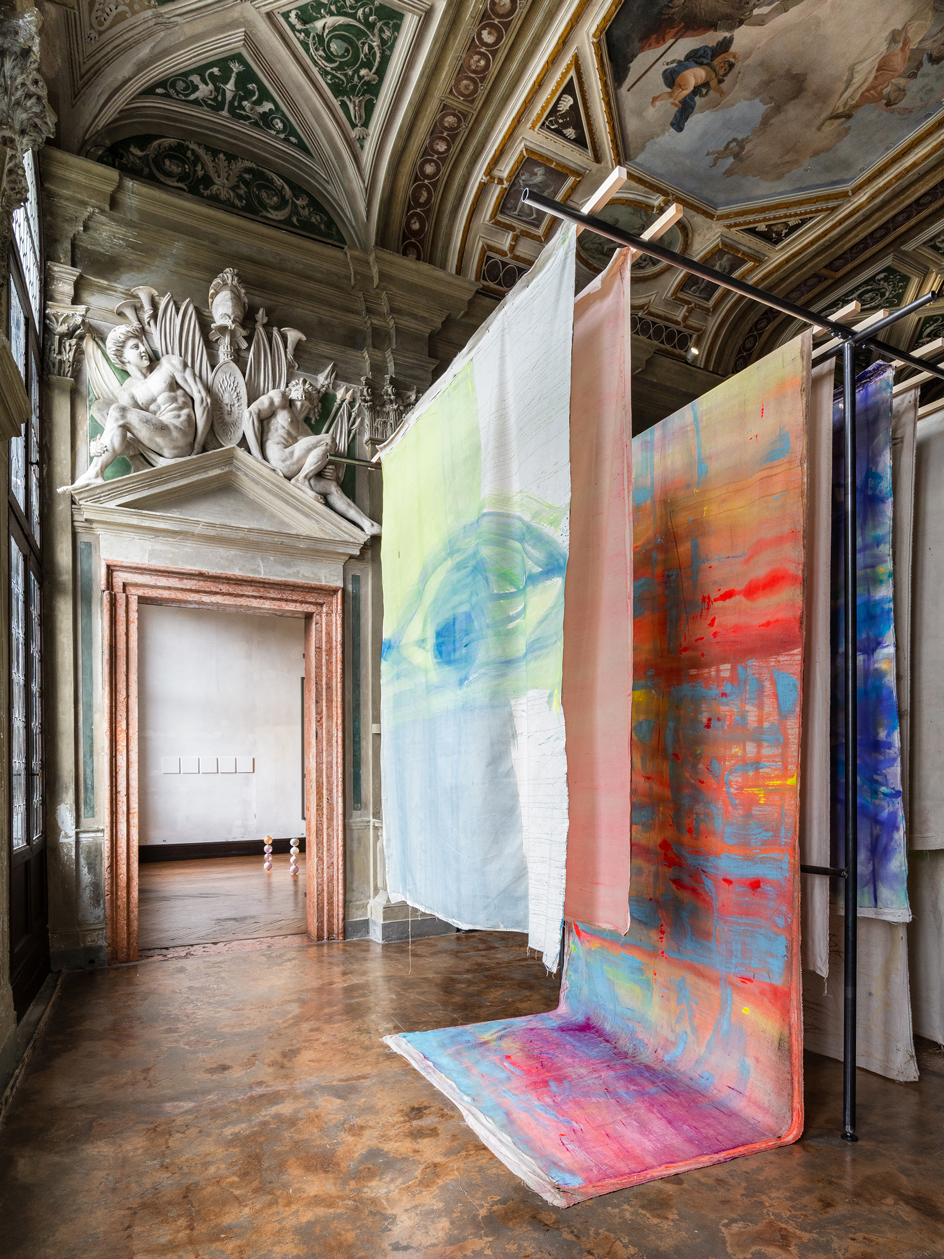
Vivian Suter, Untitled, 2023. Exhibition view of 'Everybody Talks About the Weather', Fondazione Prada, Venice
Information panels present contextual scientific data and research. Monet’s coalsmoke yellowness, blue morning light, and red rising sun are explained as a record of early industrial environmental impact, while diagrams illustrate the social and health impacts of the Little Ice Age Breugel painted through. The visitor can dive into this analysis as much or little as they wish, supported by a wide library of further reading.
Wallpaper* Newsletter
Receive our daily digest of inspiration, escapism and design stories from around the world direct to your inbox.
Upstairs, the ornate portego is dominated by Vivian Suter canvases draped from a framework, playing against the colours and Renaissance clothing in surrounding frescoes. When Suter’s work overlooked the Acropolis at Documenta 14 her canvases flitted in open breezes, here their sway is more subtle as visitors walk by and Nick Raffel’s balsa wood Fan (2022) lightly circulates air from above.
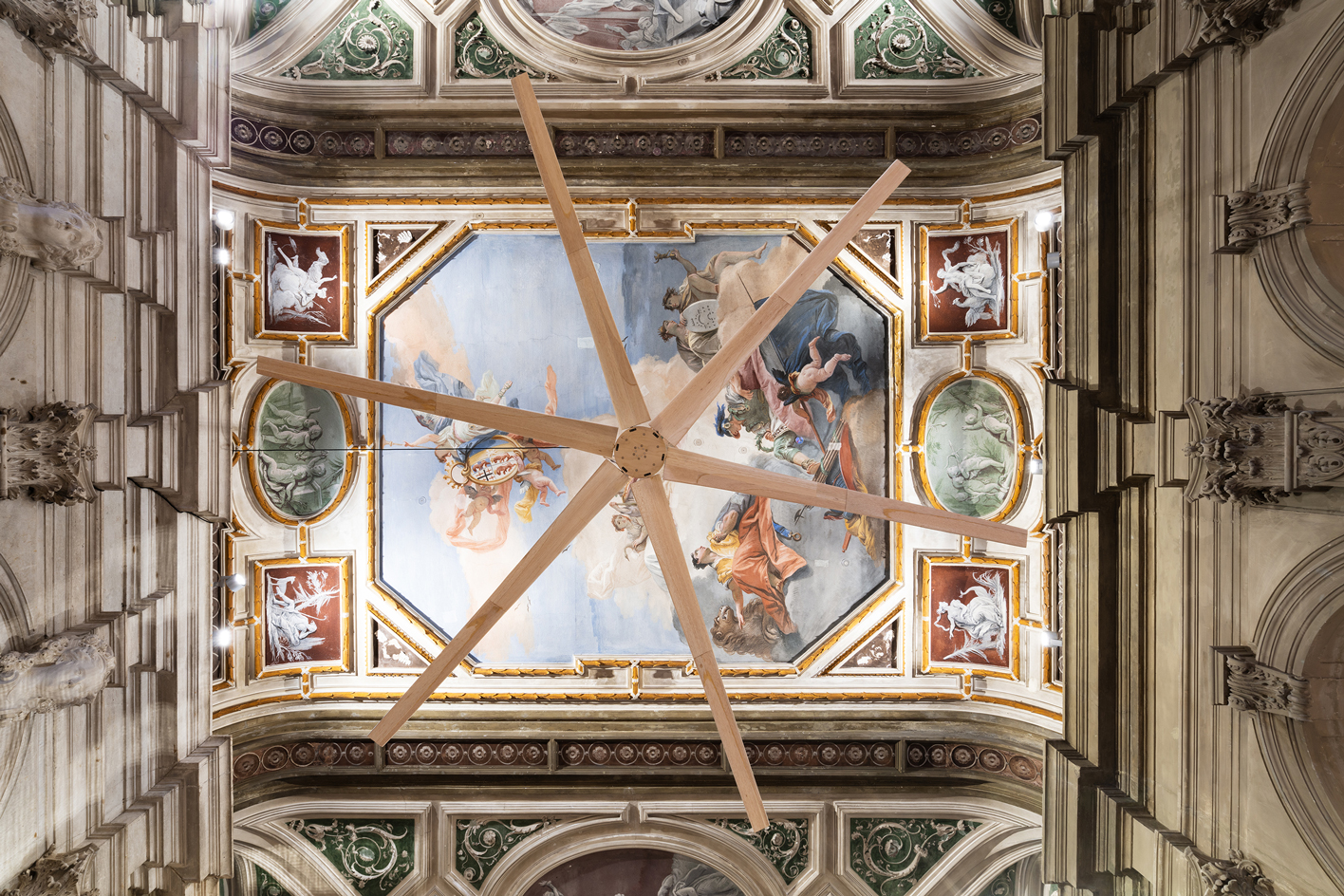
Nick Raffel, Fan, 2022. Exhibition view of 'Everybody Talks About the Weather', Fondazione Prada, Venice
Rooms on each side of the portego consider thematic climactic conditions including rain, clouds, and melting, using a variety of historic and contemporary works: Venetian Giorgio Andreotta Calò’s 2014 core samples of Lagoon mud provide more strata, utilising a process used by both environmental and extractive industries; an anonymous naïve 1709 painting captures Venetians comedically slipping across the frozen lagoon; a photograph by Hans Haacke documents the freezing, melting, and evaporation of snow on his studio roof; while diptychs from Chantal Peñalosa photograph a cloud from each side of the Mexico-US border as it innocently crosses the hard division. ‘The cloud is kind of like the archetypal figure here because it's the sublime object of detached aesthetic contemplation,’ Roelstraete suggests, before adding ‘but it can also be a portal of disaster.’
The dialectic between beauty and fear, as illustrated by the cloud, is present throughout ‘Everybody Talks About the Weather’, but might aestheticisation and beautifying unimaginably horrific outcomes soften fear, feeling, and potential action? ‘Yes, to a certain extent, but to a certain extent, aestheticising might also help mobilise,’ the curator says, before adding ‘though most of the people who will come see this are, of course, already aware.’
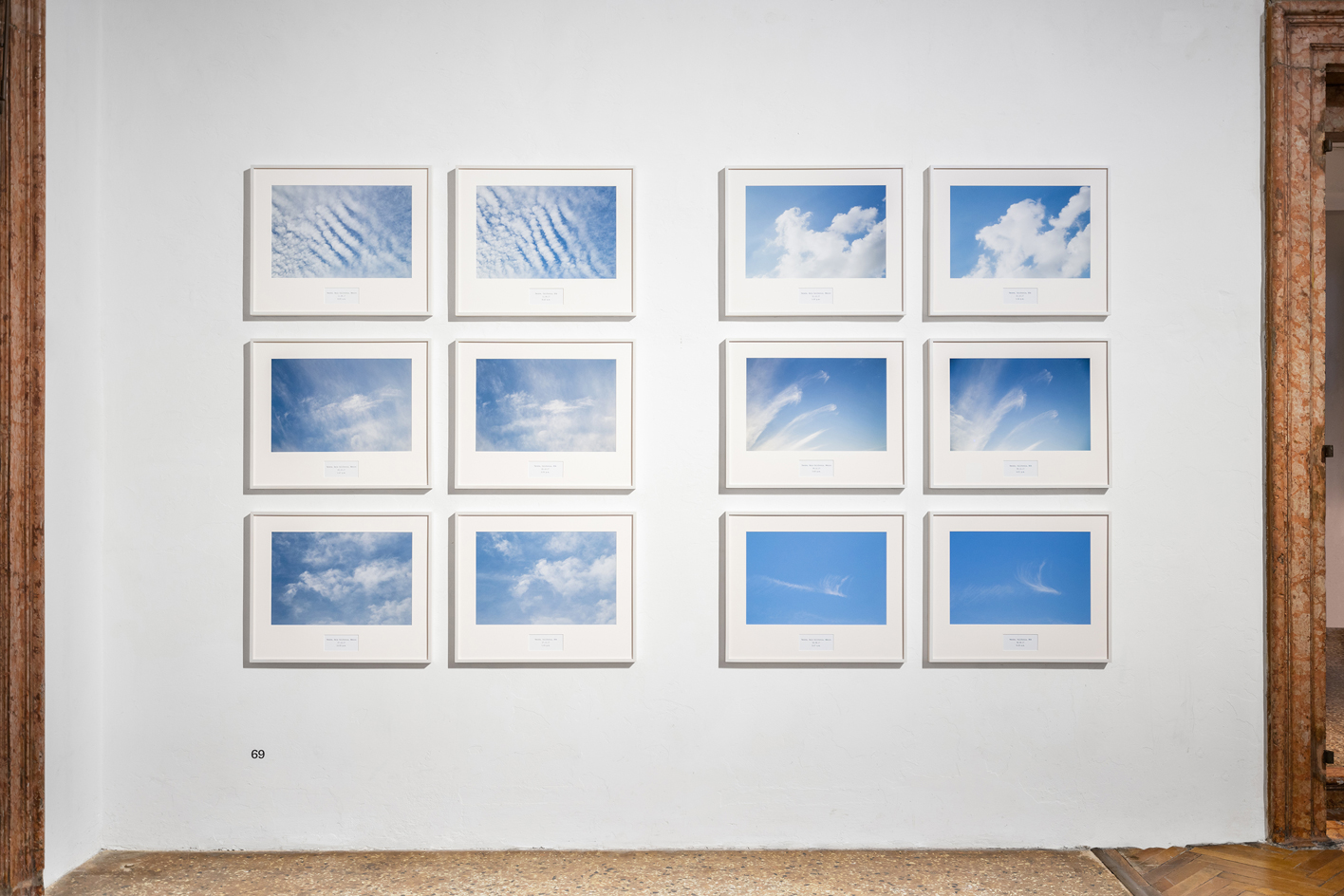
Chantal Peñalosa, Untitled, 2018, Exhibition view of 'Everybody Talks About the Weather' Fondazione Prada, Venice
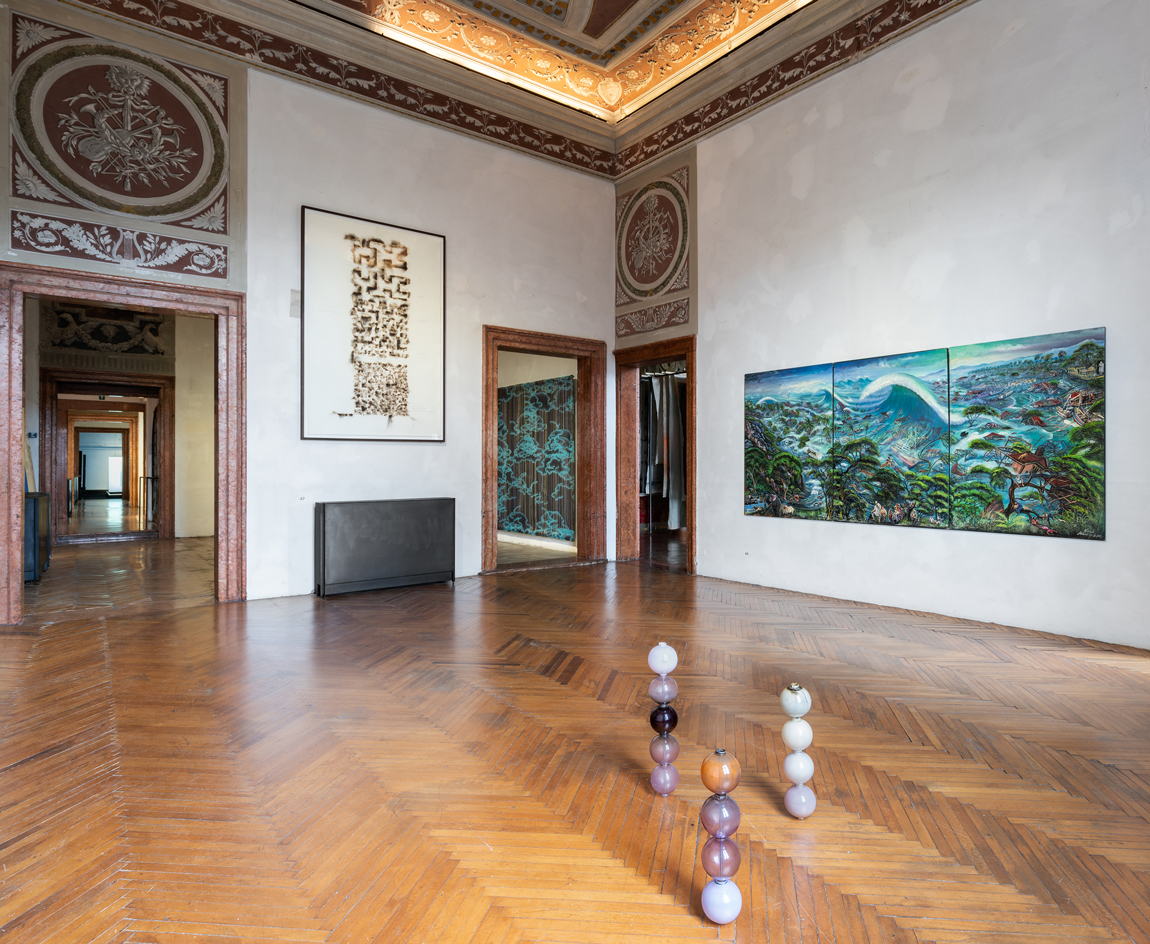
Exhibition view of 'Everybody Talks About the Weather' at Fondazione Prada, Venice
'Everybody Talks About the Weather', until 26 November 2023. fondazioneprada.org
Will Jennings is a writer, educator and artist based in London and is a regular contributor to Wallpaper*. Will is interested in how arts and architectures intersect and is editor of online arts and architecture writing platform recessed.space and director of the charity Hypha Studios, as well as a member of the Association of International Art Critics.
-
 Tour the best contemporary tea houses around the world
Tour the best contemporary tea houses around the worldCelebrate the world’s most unique tea houses, from Melbourne to Stockholm, with a new book by Wallpaper’s Léa Teuscher
By Léa Teuscher
-
 ‘Humour is foundational’: artist Ella Kruglyanskaya on painting as a ‘highly questionable’ pursuit
‘Humour is foundational’: artist Ella Kruglyanskaya on painting as a ‘highly questionable’ pursuitElla Kruglyanskaya’s exhibition, ‘Shadows’ at Thomas Dane Gallery, is the first in a series of three this year, with openings in Basel and New York to follow
By Hannah Silver
-
 Australian bathhouse ‘About Time’ bridges softness and brutalism
Australian bathhouse ‘About Time’ bridges softness and brutalism‘About Time’, an Australian bathhouse designed by Goss Studio, balances brutalist architecture and the softness of natural patina in a Japanese-inspired wellness hub
By Ellie Stathaki
-
 Saskia Colwell’s playful drawings resemble marble sculptures
Saskia Colwell’s playful drawings resemble marble sculpturesSaskia Colwell draws on classical and modern references for ‘Skin on Skin’, her solo exhibition at Victoria Miro, Venice
By Millie Walton
-
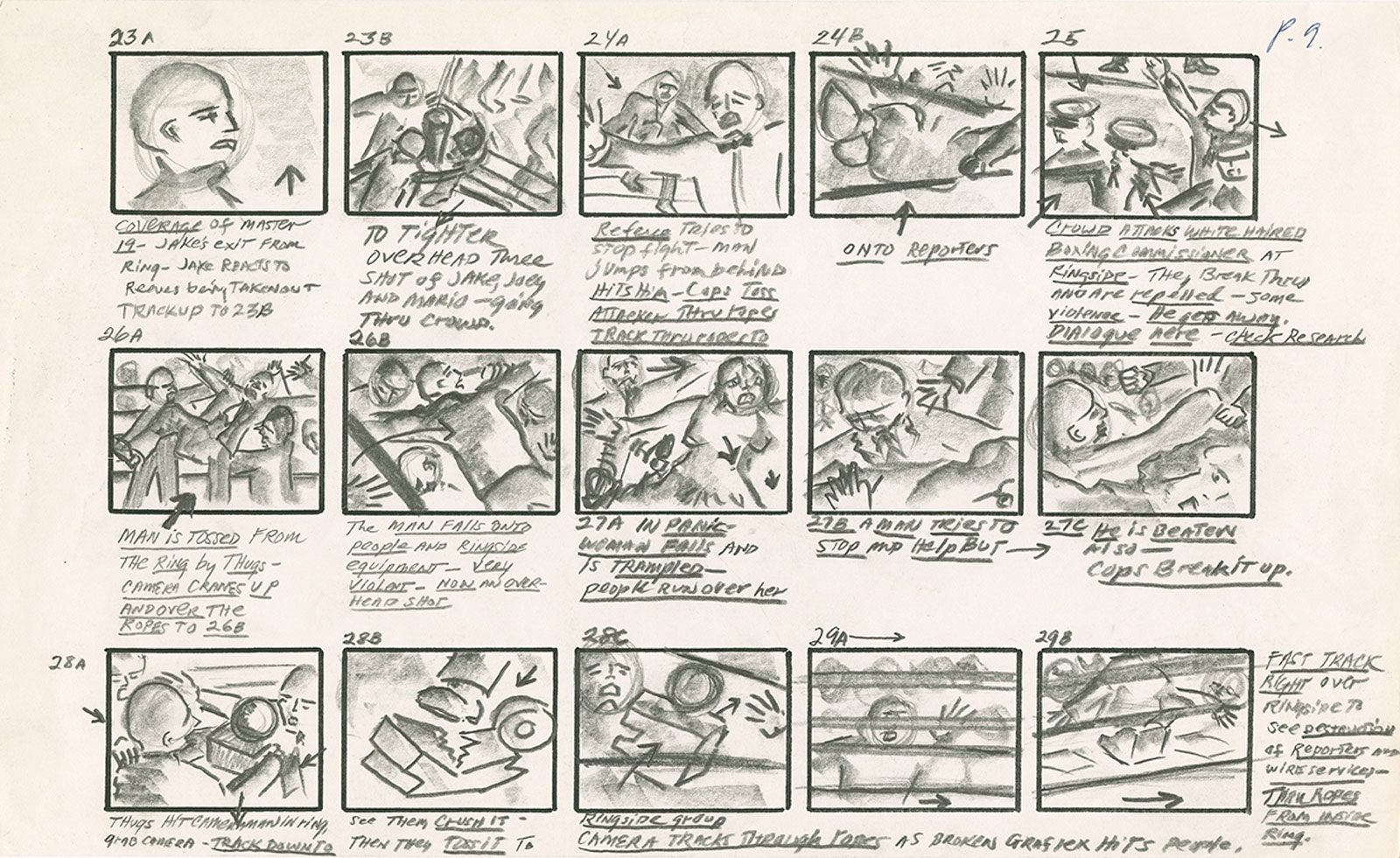 The creative mind at work: a century of storyboarding at Fondazione Prada
The creative mind at work: a century of storyboarding at Fondazione PradaFondazione Prada’s 'Osservatorio, A Kind of Language: Storyboards and Other Renderings' features some of the most celebrated names in cinema working from the late 1920s up to 2024
By Mary Cleary
-
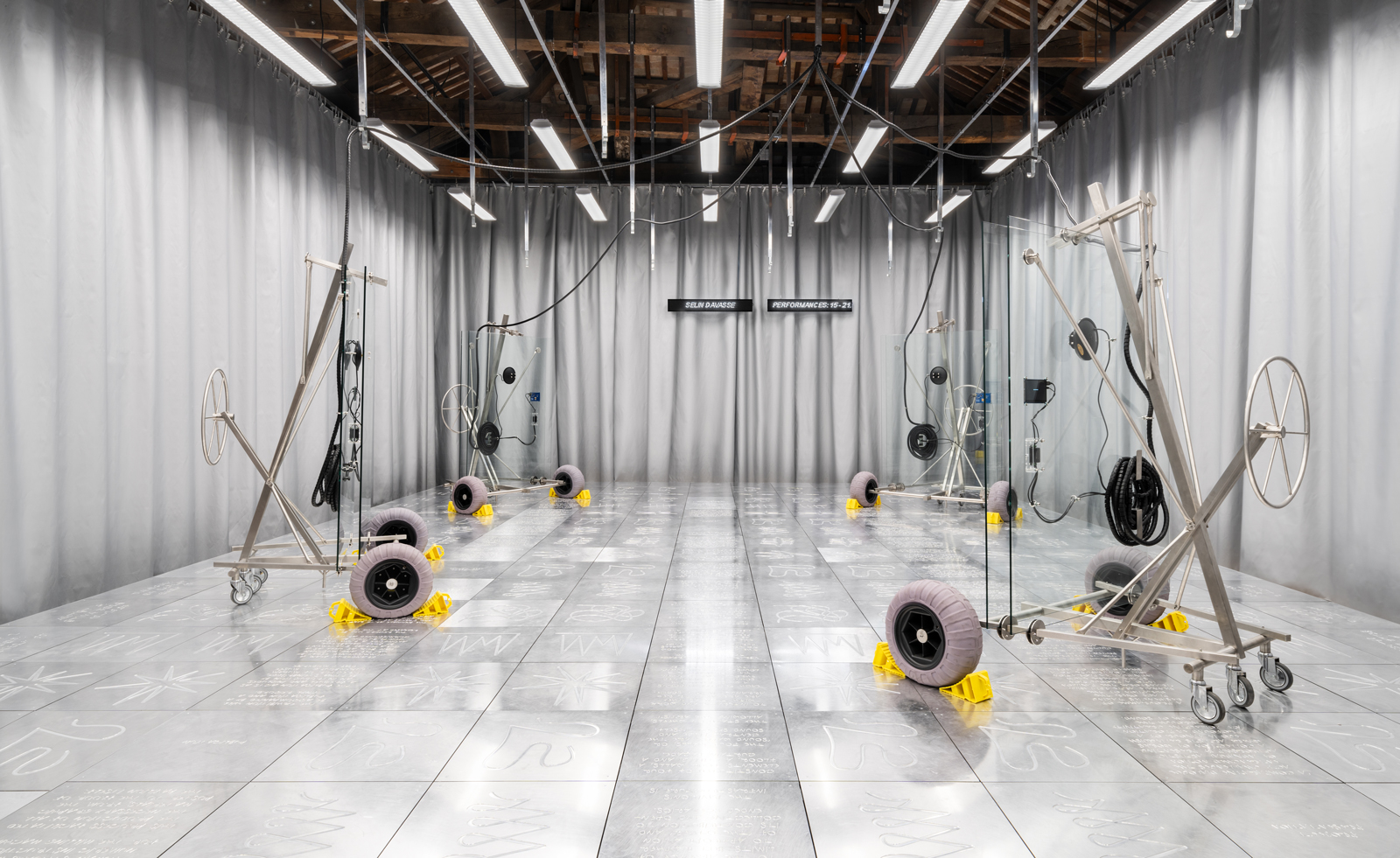 Don't miss Luxembourg's retro-futuristic lab pavilion in Venice
Don't miss Luxembourg's retro-futuristic lab pavilion in VeniceAs the Venice Biennale enters its last few weeks, catch 'A Comparative Dialogue Act' at the Luxembourg Pavilion
By Amah-Rose Abrams
-
 Portrait of a modernist maverick: last chance to see the Jean Cocteau retrospective in Venice
Portrait of a modernist maverick: last chance to see the Jean Cocteau retrospective in Venice‘Cocteau: The Juggler’s Revenge’, celebrating the French artist's defiance of artistic labels, is in its final week at Peggy Guggenheim Collection, Venice
By Caragh McKay
-
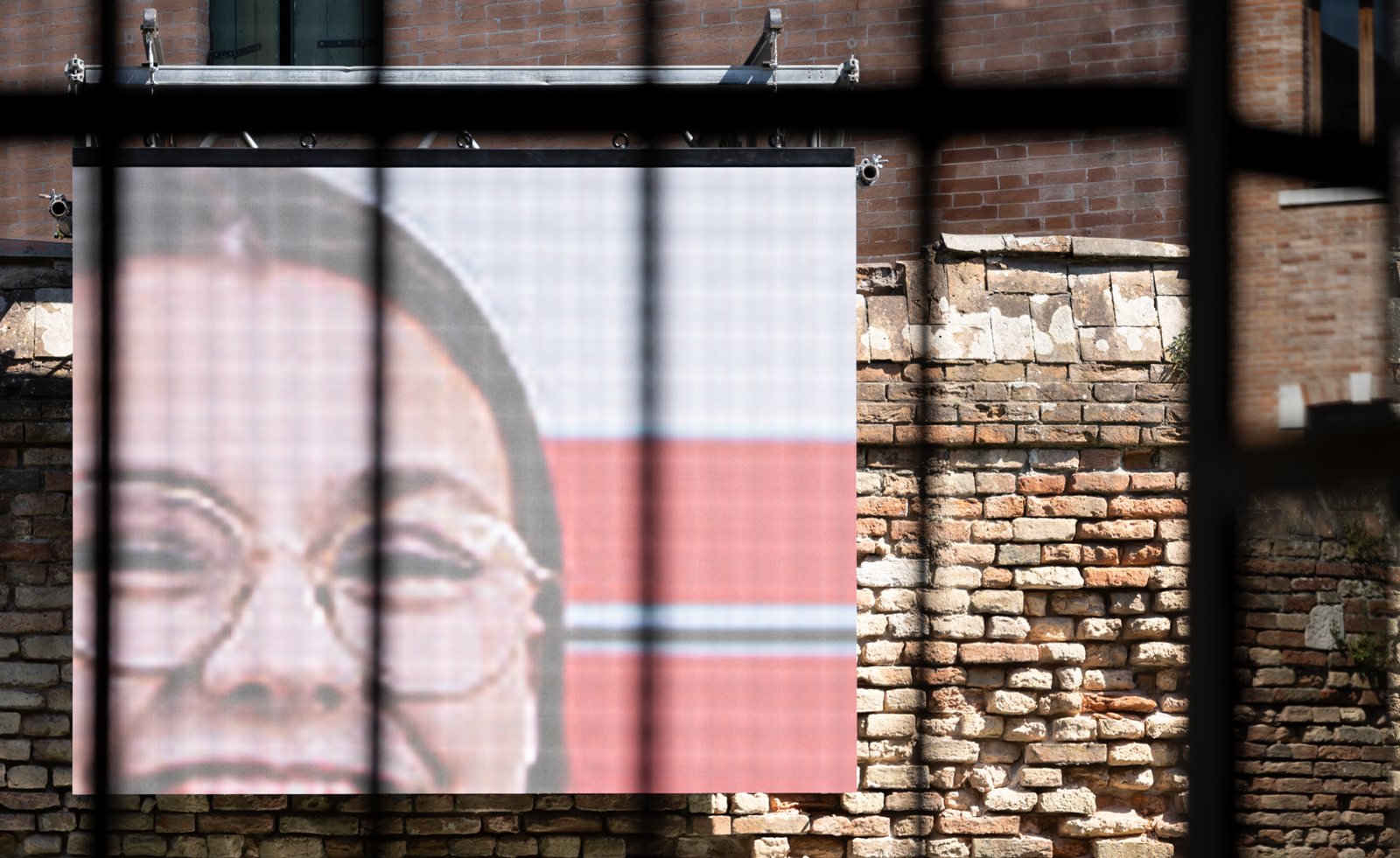 ‘Everything human-made is of interest to me’: Hildigunnur Birgisdóttir in Venice
‘Everything human-made is of interest to me’: Hildigunnur Birgisdóttir in VeniceArtist Hildigunnur Birgisdóttir explores consumerism at the Icelandic Pavilion at the Venice Biennale 2024
By Hannah Silver
-
 ‘Personal Structures’ in Venice is about ‘artists breaking free’
‘Personal Structures’ in Venice is about ‘artists breaking free’‘Personal Structures 2024: Beyond Boundaries’ reveals a rich tapestry of perspectives on the challenges of our time, from culture to climate and identity
By Nargess Banks
-
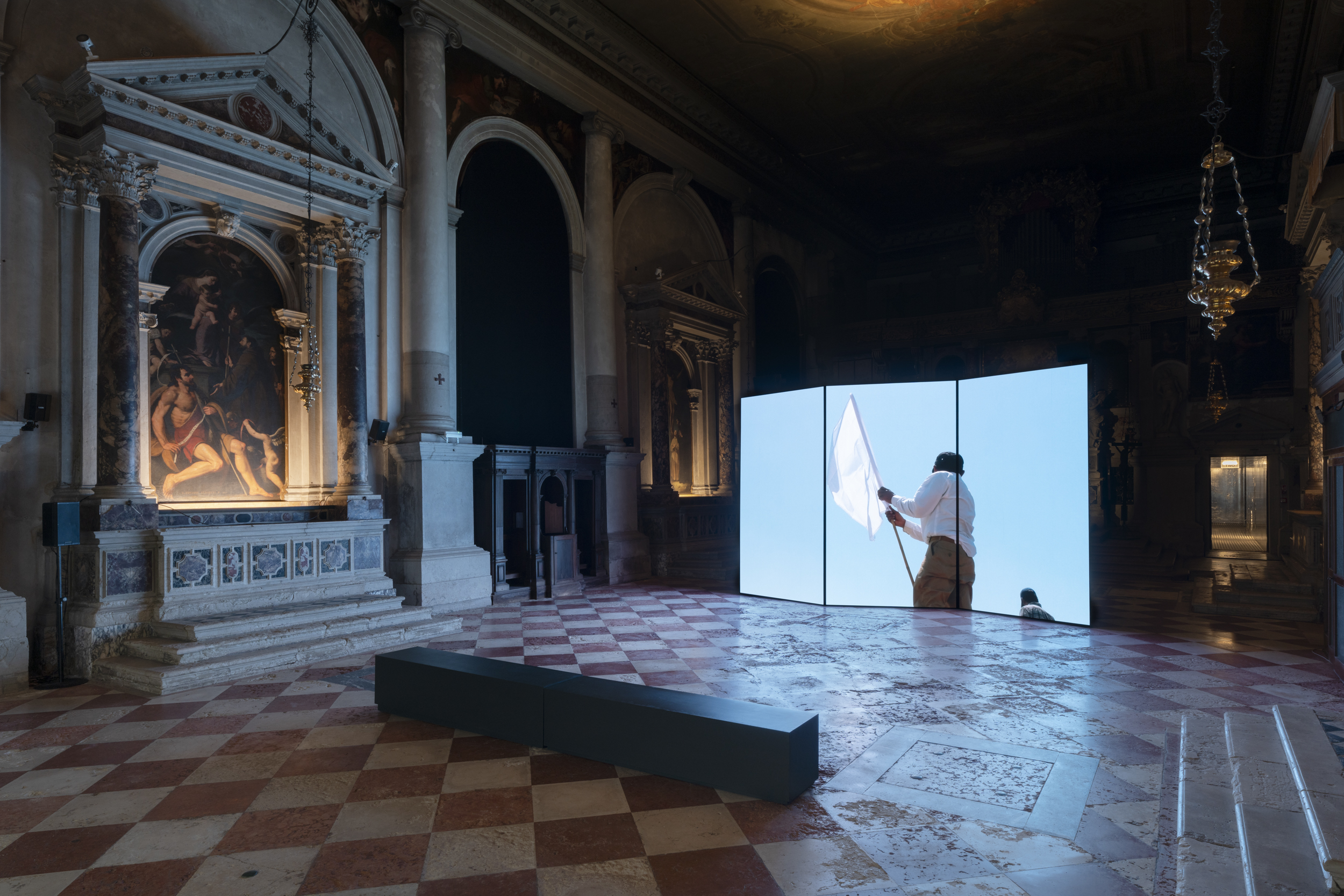 Enter the immersive world of film noir at a disused hospital in Venice
Enter the immersive world of film noir at a disused hospital in VeniceFondazione In Between Art Film returns to Venice with ‘Nebula’, by curators Alessandro Rabottini and Leonardo Bigazzi
By Amah-Rose Abrams
-
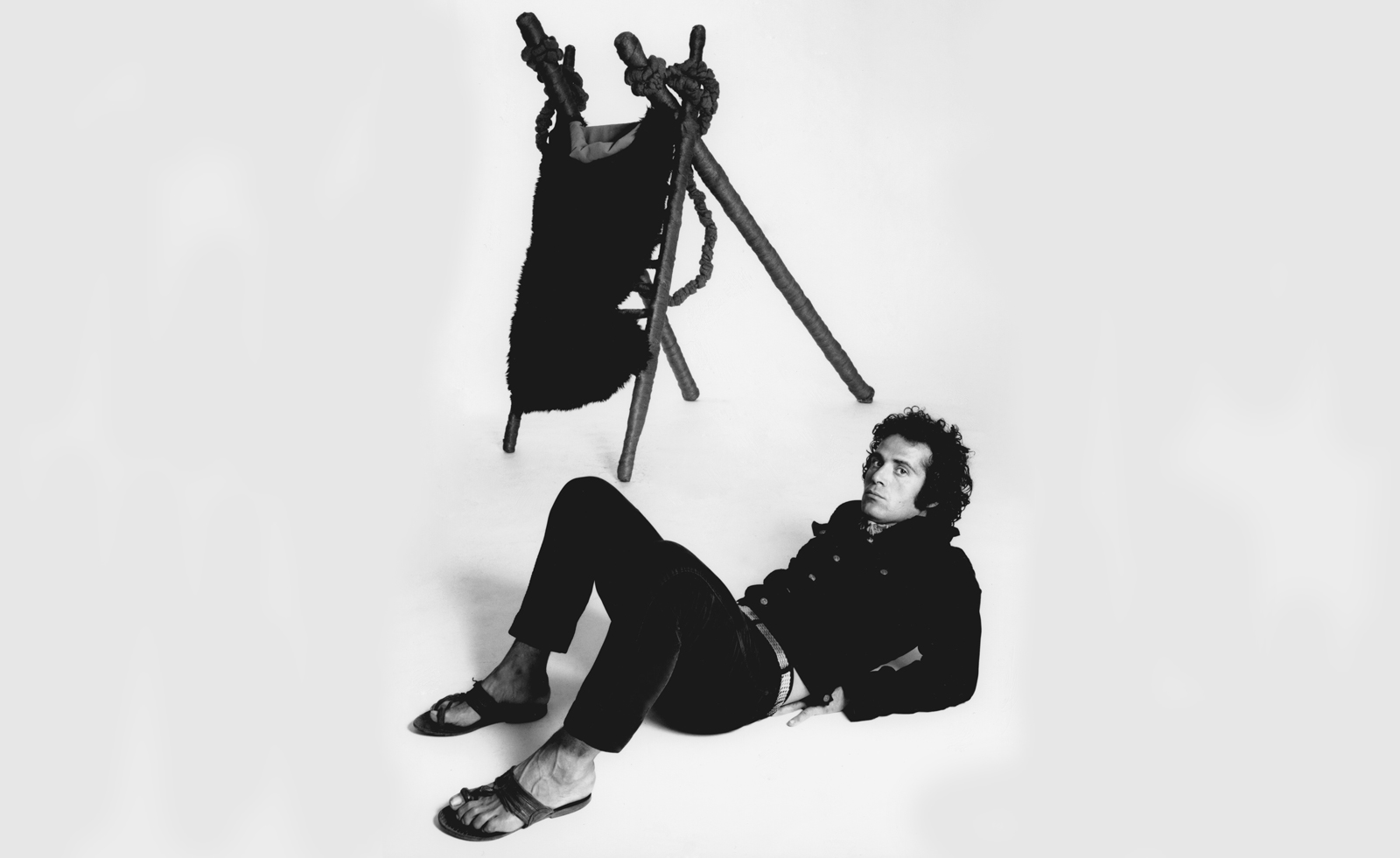 Pino Pascali’s brief and brilliant life celebrated at Fondazione Prada
Pino Pascali’s brief and brilliant life celebrated at Fondazione PradaMilan’s Fondazione Prada honours Italian artist Pino Pascali, dedicating four of its expansive main show spaces to an exhibition of his work
By Kasia Maciejowska